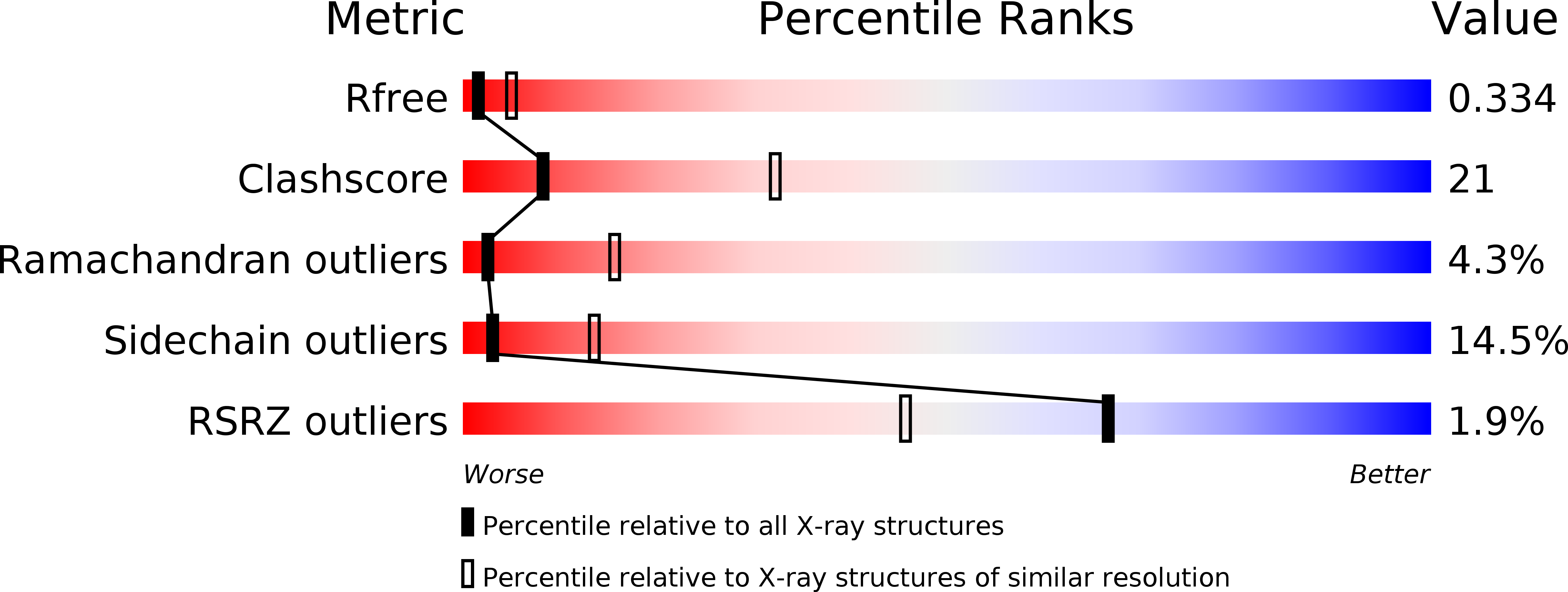
Deposition Date
2009-11-02
Release Date
2010-09-22
Last Version Date
2024-11-06
Entry Detail
PDB ID:
3KJ4
Keywords:
Title:
Structure of rat Nogo receptor bound to 1D9 antagonist antibody
Biological Source:
Source Organism:
Mus musculus (Taxon ID: 10090)
Rattus norvegicus (Taxon ID: 10116)
Rattus norvegicus (Taxon ID: 10116)
Host Organism:
Method Details:
Experimental Method:
Resolution:
3.10 Å
R-Value Free:
0.31
R-Value Work:
0.25
R-Value Observed:
0.25
Space Group:
P 21 21 2


